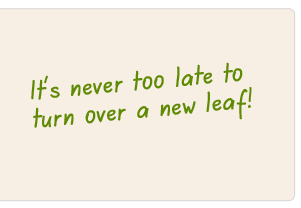It’s officially Summer!
Summer is now in full swing with Canada Day already behind us. Happy Fourth of July (later this week) to our neighbours south of the border!
Have you made any plans for the summer? No matter what you do, take time to relax and enjoy the great weather. Summer never seems to last long enough.
Let’s get started and turn over another leaf!
ORGANIZING YOUR KITCHEN
“My grandmother was the greatest cook in the world. She could just go in there, the whole kitchen would look like a tornado hit it and then she’d come out with the best food.” Edie Brickell
For many people, a lot of time is spent in their kitchen. Did your kitchen function well when you made Easter or Thanksgiving dinner? If not, take some time to organize your kitchen so you’re not frustrated the next time you entertain.
Planning
You may not be able to complete your reorganization all at once. Divide the kitchen into sections, and work on one section at a time.
Supplies
Once you’ve finished purging, you can determine what you need.
Getting Started
It’s important to think of your kitchen as prime real estate space.
Frequently used items should be stored in the work triangle in your kitchen–between the stove, refrigerator and sink. Store items for food preparation, cooking/baking, serving, storage and cleaning there—close to where they will be used. Make your kitchen as efficient as possible.
Start by grouping similar items together by category.
China/Glassware/Silverware
Setting the table and washing dishes are things to consider when determining the best location for these items. A cabinet close to the dishwasher or sink makes putting away the dishes easier. Or you may want these items in a cabinet close to the table. Do you have a cabinet located halfway between your table and your dishwasher?
Pots and Pans
Pots and pans can be reached more easily when they are stored in a drawer. Display pots and pans by hanging them on racks if you have limited cabinet space.
Serving Items
Serving trays (and cookie sheets) are best stored in divided racks, so that they slide out easily. For items that are only used several times a year, you may wish to store them in your dining area or basement.
Food Preparation
Try to keep your countertop clear for food preparation. Limit the countertop to items used on a daily basis. This will also make it easier to keep clean.
Storage
Clear storage containers should be used as much as possible, so you can see what is inside. You need to know when you are running low on a particular item, so that it can be added to your grocery list. Square or rectangular containers stack more easily, fit better on a shelf and take up less space. Be sure to label all containers.
Items like gravy and sauce packets can be easily retrieved if stored in baskets. Baskets also work well for children’s lunch or snack items.
If your kitchen utensils are crammed in a drawer, determine which ones you actually use. Empty the drawer, put everything in a box and then take utensils out as you need them. Get rid of the ones that are left at the end of a month or two. Frequently used utensils can be stored in a handy container on the countertop.
Pantry
Discard items which are past their expiry dates.
Consider storing items like rice, pasta, cereal and crackers in plastic containers to keep them fresh. Adjust shelves or add extras to maximize your storage. Heavy items should be stored on lower shelves for safety.
Spices
There are many storage options for spices today—a traditional spice rack, magnetic spice containers or a tiered drawer insert. In order to keep spices at their best, do not store them too close to heat sources.
Refrigerator and Freezer
Clean out your refrigerator on a weekly basis. Get into this habit the night before your garbage is collected.
Post a grocery list on the refrigerator, so that it’s easy to add items to your list.
If you haven’t cleaned out your freezer in a long time, don’t despair. This is a chore that’s easiest to do when the weather is cold. Discard items that have dried out or items that won’t be eaten.
Junk Drawer
Try to avoid a junk drawer. Items typically found there are usually best stored elsewhere.
Renovations
If you’re planning to renovate your kitchen, make some notes about what you’d like to change—as you think of them—such as a drawer for storing pots and pans or a roll-out pantry.
Rewards
Reward yourself with a cup of flavoured coffee, tea or hot chocolate. Organizing your kitchen is one of those tasks that will pay dividends every day. Your eating habits may even improve!
 It’s November!
It’s November! 






Connect with us Online